Kashan - desert pearl
- Taste of Adriatic
- Oct 1, 2018
- 5 min read
Updated: Mar 1, 2019
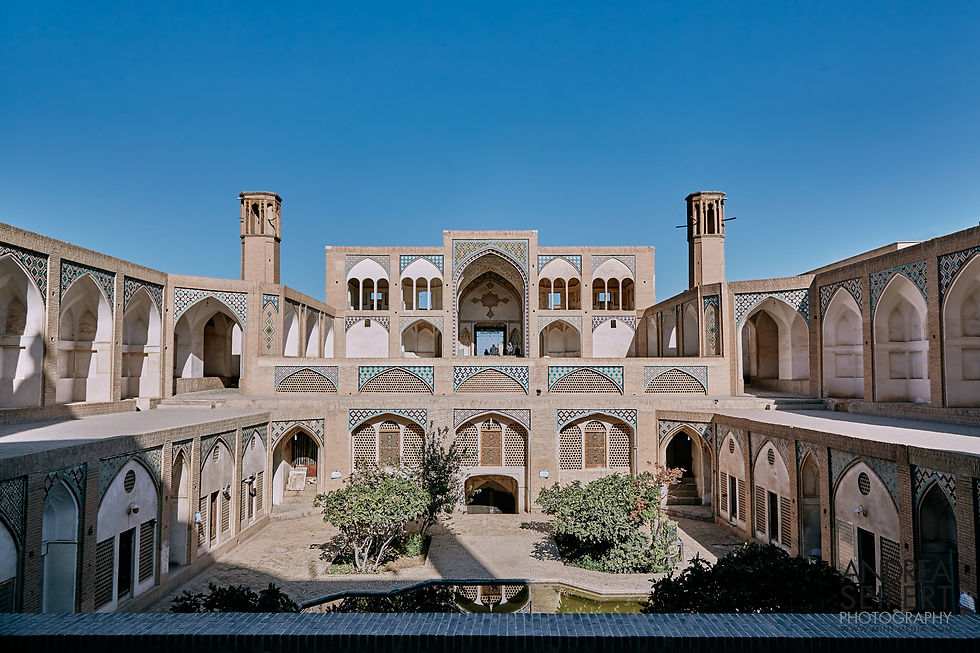
On the edges of Dasht-e Kavir, one of the largest Iranian deserts, lies Kashan, a pearl of Iranian classic architecture. Many tourists fail to travel to Kashan, which is a bad mistake. This town should be on everyone’s list when touring Iran. It boasts historical houses and hammams, it has beautiful surroundings and also one of the best-preserved Persian gardens.
We were lucky to have a very knowledgeable guide with us, Mr. Alex or Alireza, who was a result of excellent proposition made by Land of Turquoise Domes. First night after we’ve arrived to Kashan, we went for a dinner and quite suddenly we came across Mr Hossein Moznabi, a tourist guide but also an author of Iranian and Kashani cookbook! He prepared for us excellent tours in Kashan and around it, and we definitely would recommend everyone to have a guide in this town.

Among Iranians and foreigners alike, Kashan is famous for its historical houses and mosques. One such mosque, where we learned from Mr Alireza many traits of Iranian sacral architecture is Agha Bozorg, situated in the very centre of the old town, which is romantically made of narrow alleys. All architecture is made in Iran according to a symmetrical design (always with one deliberate mistake, as the architects believed the perfection may only be achieved by God himself). Beauty is everywhere mixed with function: for example, traditional wooden doors in Iran always have metal implants. The reason, apart from making an aesthetic appeal, is also not to let the doors rotten.
Agha Bozorg gallery:
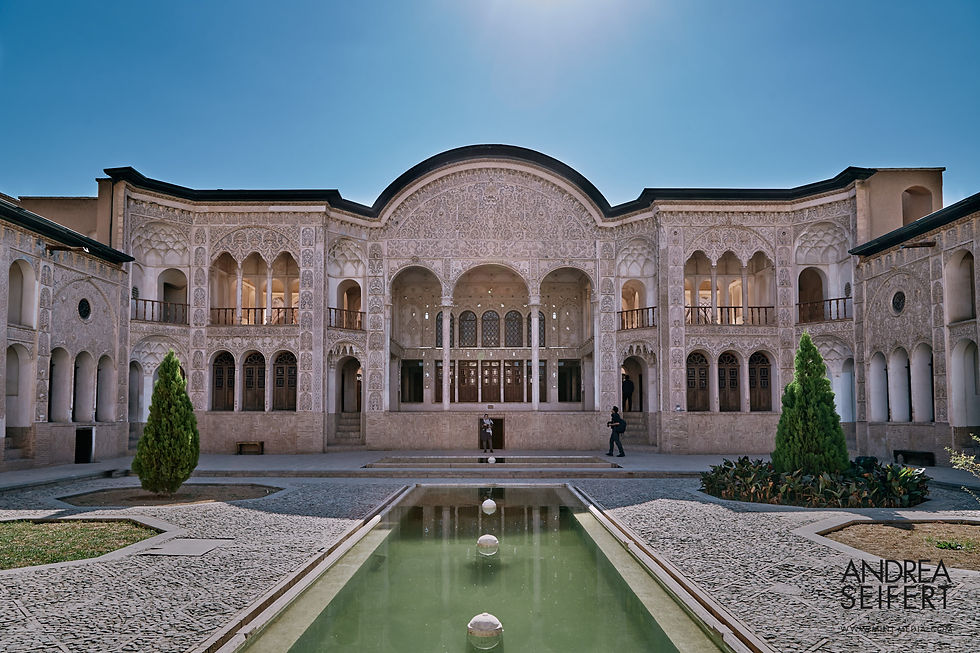
In Kashan’s traditional houses same pattern continues. Among the many traditional houses in this town, we opted for Tabataba’i, which is one of the largest. This house was built by Seyyed Ja’far Tabataba’i, one of the famous handmade carpet merchants, in 1834. It is built below the ground level (as all Kashani houses are) with an internal-oriented and symmetrical design. The house includes the family section, business section and servants’ rooms. It has 40 rooms, 4 yards, 4 cellars, 3 wind towers and 2 underground water canals (qanat). The skilfulness and artistry of famous Kashani architects, along with the stucco-work and paintings of Mirza Abolhassan Sani-ol-Molk Ghaffari Kashani, have created a picturesque and eye-catching house that took 10 years to be build.
Tabataba'i gallery
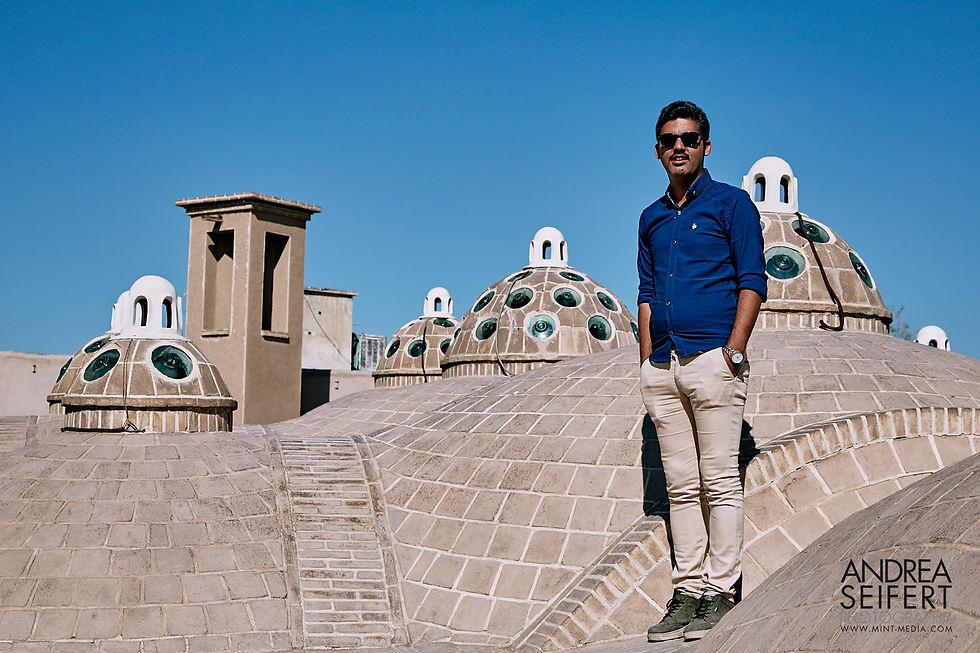
This historical house is considered as one od the most beautiful and if you have only time for one house, this should be it, due to the artistic masterpieces it contains. But, you’ve just read it has some underground water tunnels and wind catchers? What is that, you might ask?! Nothing in traditional Iranian house comes without aforementioned combination of functionality and beauty. Upright chimneys and occasional dome that are giving a skyline similar to the Tatooine planet from the Star Wars are called bādgir and are genius finding of Iranian architects.
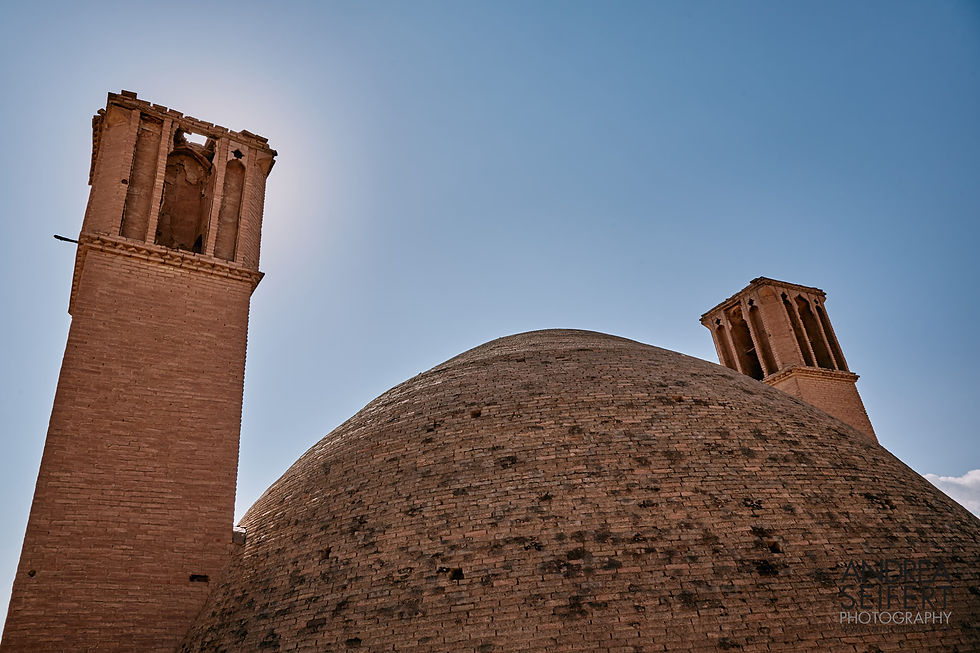
The name itself means “wind-catcher” and that is how you should call them. They are made to create natural ventilation in buildings. Brilliant Iranians! Living in a desert makes you think how to solve things like heat and there you go – an ancient air-condition is born! it was cooling the inside of the dwelling, often in combination with courtyards and domes. The wind is “caught” through several openings on the windcatcher that created a downward airflow due to direct entry of the wind. Windcatchers were also instrumental for cooling the food in cellars or to produce ice in water cellars.
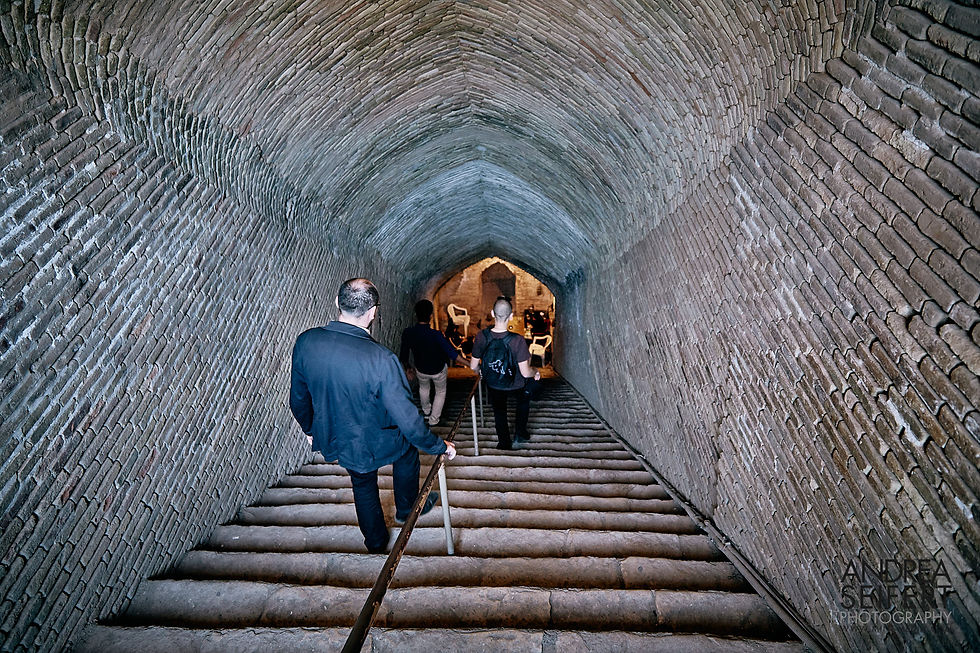
But where would water come from? After all, this is arid country, with few big water sources. So, the Iranians have built qanats, a gently sloping underground channel to transport water from a spring or aquifer to surface for irrigation and drinking. Usually they would be 70-80 km long and would be completely important for the livelihood. The place that had qanats had a suffix abad which means “a developed place”. Why was it developed? Because it had water and water in Persian is āb. Now finally we know what does all of those abads mean!

Among the largest water tanks is in the nearby Nushabad. Old legends were saying there is an underground city here, but no one believed the old ladies! Not until, by sheer accident, the whole array of tunnels was found. Once in the past, people would hide in secret underground town from the raiders. It was an utmost secret in the village and a magnificent technology was used in preserving the life down there. The city boasts with narrow and dark tunnels ending in a more comfortable larger rooms for dwelling. Between them loads of booby traps were made and Mr Alireza showed us almost every single one, tring to make the experience as lively as possible. Construction of this man-made subterranean city, called Ouee (or Ouyi), dates back to the Sasanian (or Neo-Persian) Empire that ruled from 224 to 651. Inhabitants would dig underground chambers as hideout spots for women, children, and the elderly in the event of an attack by foreign invaders. Over the years, the individual chambers were amalgamated, and air ducts, water pipes, storage spaces, and toilets were all built—creating a sustainable underground city that was used as a refuge during times of war. Each family had their own room of sorts, with a tunnel running down the length of these rooms, similar to a hotel hallway. offers a very interesting short tour and is not very far from Kashan itself. It also contains a huge water reservoire.

All of the historical houses have also traditional gardens and single most beautiful is Bāgh-e Fin, which was a royal garden. It is an oldest extant garden in Iran, completed in 1590. Kashan was at that time an outpost north from the Safavid capital of Esfahan. It is also known as the 1852 murder scene of Qajar chancellor Amir Kabir, one of the most powerful and significant man in the Iranian recent history. The Fin garden is a combination of Safavid, Zandiyeh and Qajar architecture and is absolutely lovely place, albeit crowded by many visitors. While walking next to the trees and water, we could only imagine poets and scientists sitting in kushks (kiosks), relaxing from the heat outside and thinking of creating some masterpiece.
Feels almost like a paradise and you wouldn’t be so wrong. The word paradise is of Persian origin. Pardis denotes splendid enclosed garden. It is also a female name and name of a town in Iran. Again, we should go back to the history and philosophy lessons to understand it entirely. Enclosed gardens have three basic features: walls (meaning security), trees (meaning eternity) and water (meaning life). All three combine to make a paradise. Water is always in a centre of a four-corner garden, while trees are forming four separate portions of a garden. That is why Persian garden is called “chahārbāgh” or literally four gardens. Among the trees, pomegranate and cypress trees are most beloved.




























































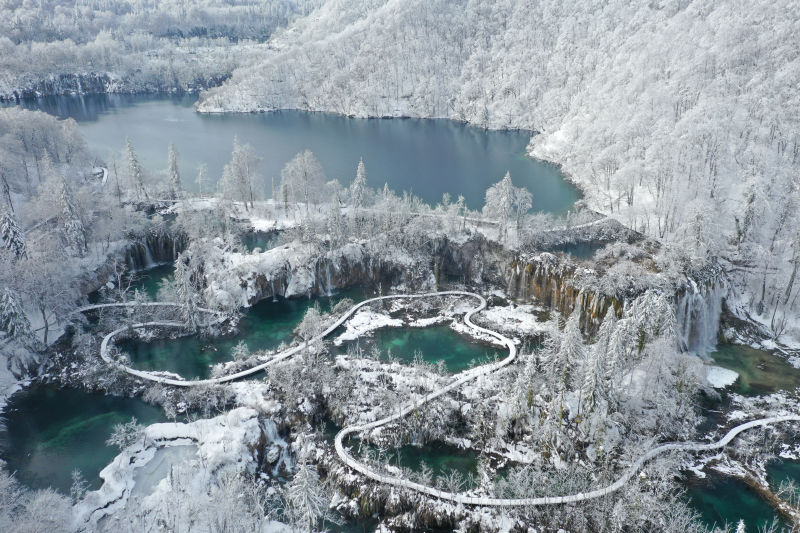

Comments